
Multiplication and knowing how to do “times” is what a lot of students (and adults) view as “big kid math.” Students are often eager to memorize and recite multiplication facts to show how “smart” they are. Some of this is unavoidable. However, when we reinforce this way introduce multiplication in our teaching, it opens the door for misunderstanding and limits a student’s ability to recognize multiplication in the real world.
Multiplication is far more than fact fluency. When we introduce multiplication to our students, it’s important that we help them build a solid foundational understanding before we push fact memorization and fluency. But how do we do that? How is that foundational understanding built?
Introducing Multiplication in the Real World
I Introduce multiplication by providing real-life examples that they can latch onto; to help them recognize WHY multiplication matters and how it is a helpful real-world tool.
When we introduce multiplication I use very common situations within our own classroom. By using a common setting and common materials it helps better avoid potential language and/or cultural barriers.
For example, we might say that during art class, each student needed 3 crayons. That means if we have 20 students, we need 20 groups of 3 crayons.
Instead of saying/writing 3 + 3 + 3 + 3 + 3 + 3 + 3 + 3 + 3 + 3 + 3 + 3 + 3 + 3 + 3 + 3 + 3 + 3 + 3 + 3, there is another way that we can say/write it: 20 x 3. The “x” means groups of. Each group is equal to the next group because every student is getting 3 crayons.
I will usually give a few more examples. Perhaps I say that our class is playing BINGO. We have 5 tables in the class, and each table needs to have 4 boards each so every kid can play.
Instead of saying/writing 4 + 4 + 4 + 4 +4, there is another way we can say/write it: 5 x 4 because we need 5 tables of 4 boards each.
You get the idea… when introducing multiplication, use the context of your classroom to create some very clear examples for your students. Vary the numbers and the language you use. And then…
Introducing A Variety of Multiplication Models
After we introduce the concept of multiplication and help them identify real-world examples, we can move into language. It’s important that we explicitly teach students to interpret the language of multiplication The language of multiplication can take many forms:
- Rows of
- Piles of
- Groups of
- Stacks of
Offering opportunities for students to see a single multiplication problem shown in multiple ways can help reinforce this language.
I find it helpful to have common visuals when I introduce multiplication. I love having an anchor chart available to students to help them make sense of this language. We create the anchor chart together as we try out different ways to represent our multiplication problem. We model the stacks, groups, rows, and piles together and then transfer those models to our anchor chart.
Independent Practice
There are loads of activities and lessons you can do to reinforce this language, but here is one of my favorites (and also the simplest):
This can be done independently or in pairs.
I give each student/pair a single multiplication sentence on an index card. Then I put out the following math manipulatives for students to choose from (or anything along these lines):
- Unifix Cubes
- Square Tiles
- Mini Erasers
- Counting Bears
- Bingo Chips
Choice in this activity is key to getting students invested and motivated to try this on their own.
At their table or desk, students then attempt to model their multiplication sentence using the language we’ve introduced. For example, if I gave them a card with 3 x 4, student might show:
- 3 piles with 4 mini erasers in each pile
- 3 rows of square tiles with 4 tiles in each row (making a 3×4 array)
- 3 stacks with 4 Unifix cubes each tower
- 3 groups of counting bears with 4 bears in each group
I make sure to have our anchor chart available for students to refer back to if needed, but I will also make sure to circle around the room and check in with students who may need additional support.
Ways to Differentiate
This activity is a wonderful way to introduce multiplication because it is so easily differentiated. You can allow students to self-select their multiplication problem, allowing students to challenge themselves as they feel comfortable.
Students can also complete more than one model. You can encourage them to show the SAME multiplication senetence in a different way, OR select a new sentence to model in a different way.
You can also encourage students to begin thinking about how these multiplication problems can circle back to your conversations about multiplication in the real world. What story problems can they create using their models?
A Multiplication Museum Walk
After students have had ample time to create their models, we have students flip over their index card so the multiplication sentence is not visible.
Then students are asked to go on a “Museum Walk.” The gist of a museum walk is that students put their hands behind their back and walk around the room quietly observing the work of their peers. Once they have observed one model, they try to think of which multiplication sentence the model is showing. Then, they may flip over the index card to check if they were correct. Then they flip it back over and move onto another model to start over.
I hope this activity has help you think about the language we use to introduce multiplication in the classroom, and how we can model that language to help them internalize the concepts.
Do you have any other favorite ways to introduce multiplication? Let me know by dropping a comment! I’d love to hear form you.
Looking for additional activities to support multiplication? Check out my 10 favorite multiplication centers HERE!

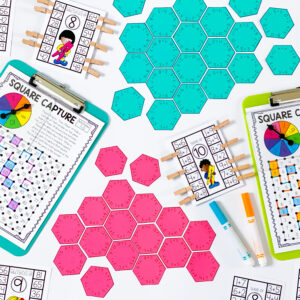
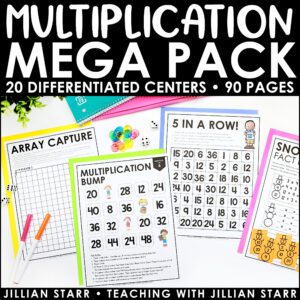
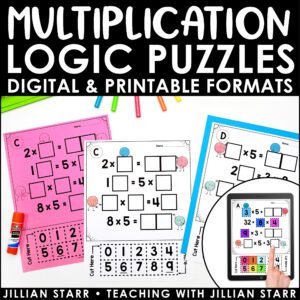
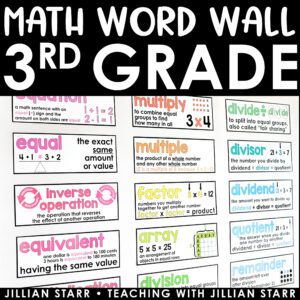
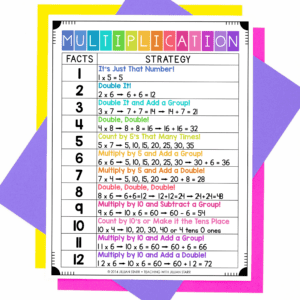
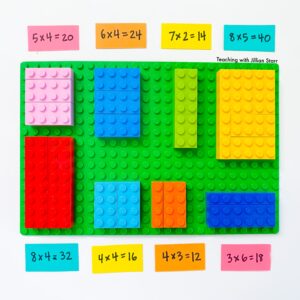
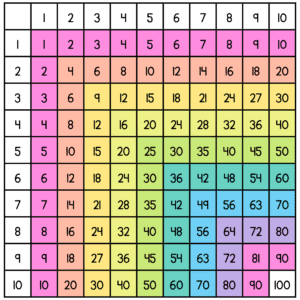



Oh my gosh, I love this post and am so thankful to you for sharing it. I teach first grade but have several students who are ready for these activities. I can’t wait to introduce them to multiplication using your ideas.
Thank you so much for this post! I’m about to introduce multiplication as arrays and repeated addition to my second graders, and I’m using this whole post as my guide! Long time fan of you and your ideas from Instagram, Guided Math Academy and your newsletter. Thank you for all you do to support teachers.
Dearest Stephanie, Thank you so much for your incredibly thoughtful comment. I’m so glad to know that this post was helpful and that you are a part of our GMA family! Your support means the world.